
NAMEX NEWSLETTER | MARCH 2025
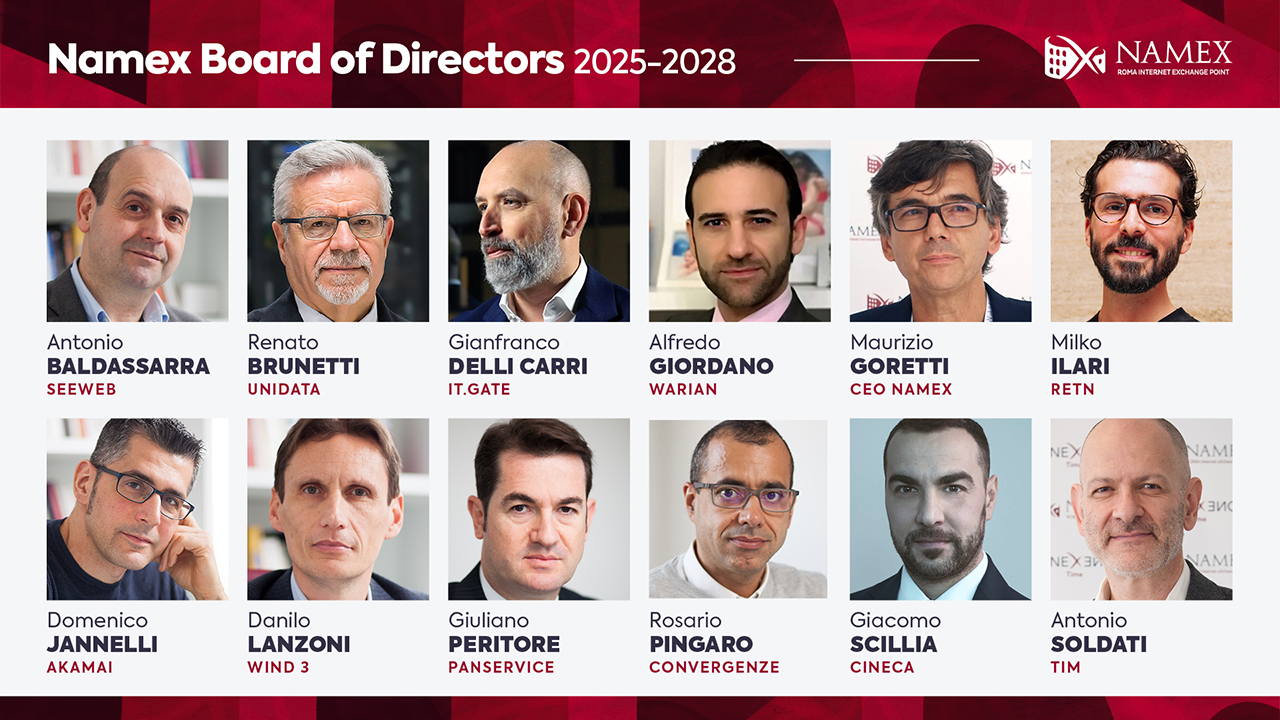
CONSORTIUM
New board of directors for Namex: growth and innovation at the forefront
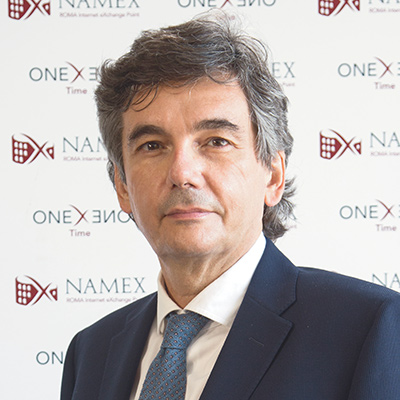
— By Maurizio Goretti, Namex CEO
On February 27, during the Namex consortium assembly, elections were held for the Consortium’s new Board of Directors.
The new team will guide Namex for the next three years, with a group of 12 members representing the different elements of the Italian digital ecosystem.
Namex continues to grow, and the numbers prove it. In 2024, the Consortium recorded significant increases on all fronts: 32 new connected networks (+14%), bringing the total to 260, turnover close to 6 million euros (+20%), and a boom in public traffic exchanged, which grew by 66%, especially in the second half of the year.
Namex has always distinguished itself for its neutral and non-profit model, guaranteeing equal opportunities to all its members, regardless of their size. The objective is clear: to put the consortium ISPs at the center and offer them a solid, efficient, and continuously expanding infrastructure.
The new Board of Directors reflects the variety of the sector, with representatives of international carriers, OTTs, telecommunications operators, and hosting providers of different sizes. A mix that guarantees balanced management capable of responding to everyone’s needs.
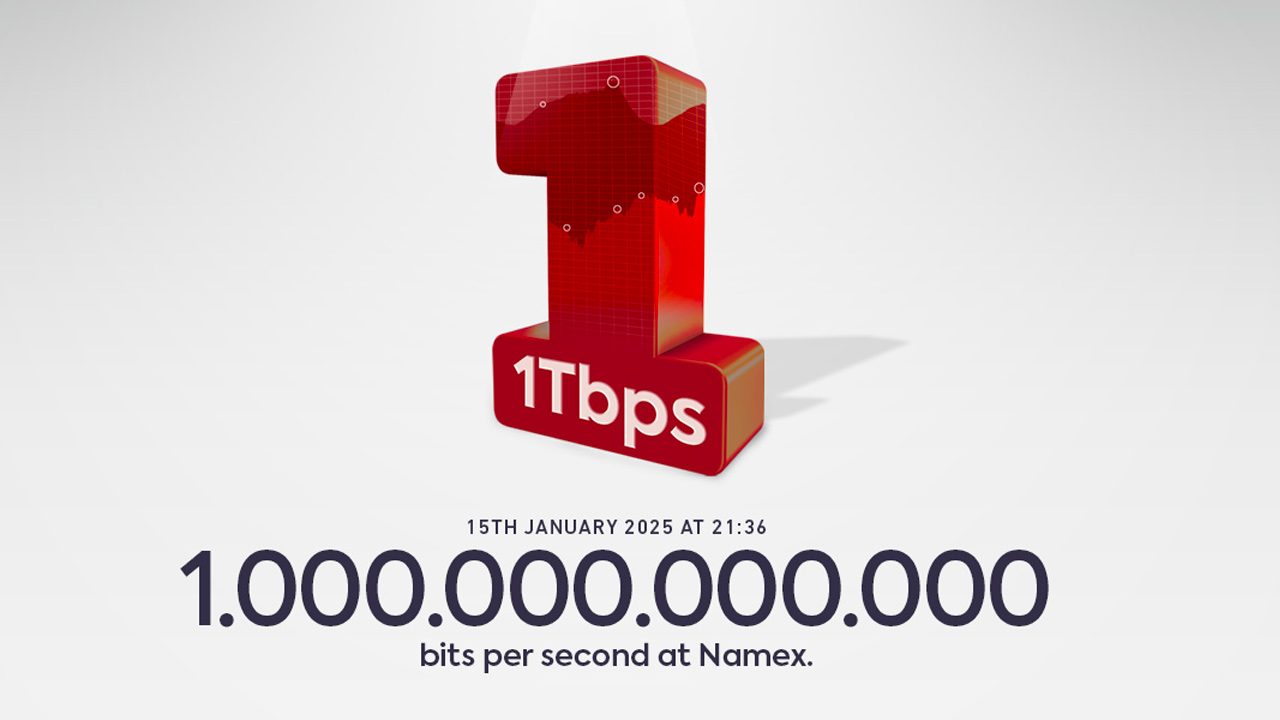
NAMEX OBSERVATORY
Namex enters the Terabit Era
— By Flavio Luciani, Namex CTO
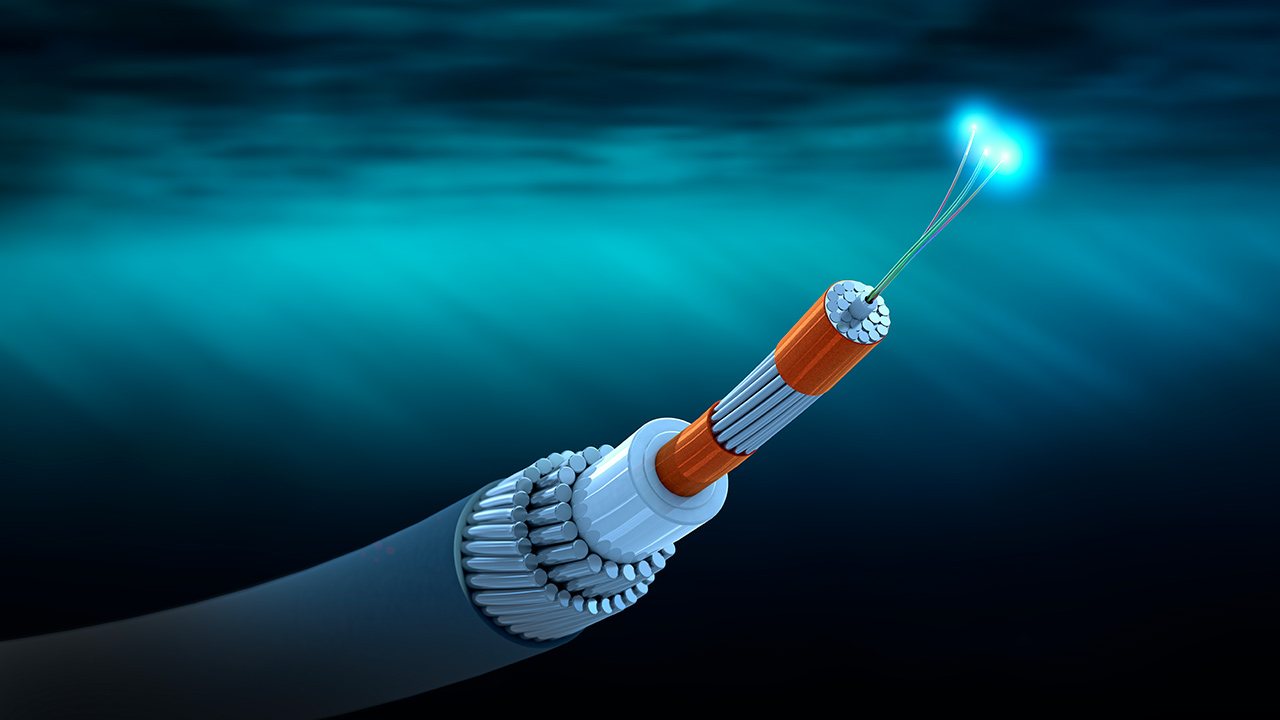
REGULATORY POLICIES
The new European strategy on submarine cable security
— By Innocenzo Genna, Legal specialist in EU digital policy, competition and liberalization regulations
The joint communication
The European Union has adopted a strategy on the security and resilience of submarine cables. This is a communication1 issued jointly by the European Commission, in the person of the Commissioner for Digital Affairs, Executive Vice-President Henna Virkkunen, and the High Representative for Foreign Affairs and Security, Vice-President Kajas Kallas. The fact that the new act was adopted in Helsinki by two European personalities from the Baltic region is highly symbolic, because it is precisely the Baltic region that has highlighted, in recent years and especially following tensions with the Russian Federation, the strategic importance and at the same time the fragility of the European submarine infrastructure system.
The joint communication intends to introduce a series of measures to strengthen the resilience of these critical infrastructures, addressing the issues of prevention, detection, response, recovery, and deterrence.
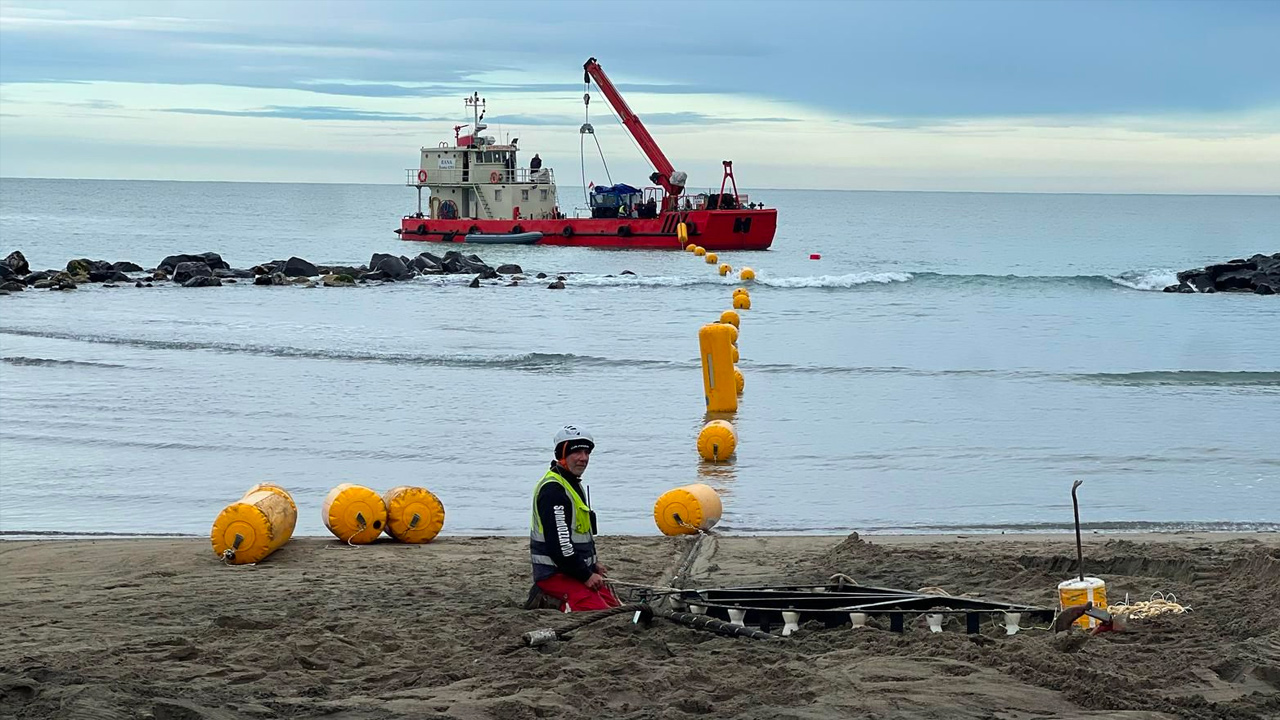
TLC WORLD
TLC: Italy at the center of major global transformations - What to expect
— By Renato Brunetti, Namex President
The telecommunications sector in Italy is undergoing significant transformation.
Some services, such as internet access and even optical fiber technologies, have become mature commodities.
According to data from the Agcom Broadband Map for the fourth quarter of 2024 (also used for the European Commission’s Desi index), FTTH coverage in Italy has increased dramatically over the past year, jumping from 59.6% to 70.7% of resident households. A similar trend is evident in SME connectivity, with coverage rising from 49% to 59%.
While Italy now ranks in the upper tier of European countries for coverage, this is only one side of the coin. The sector has realized that this path no longer generates sufficient value despite substantial ongoing public and private investments.

TECH CORNER FOR MEMBERS
Namex Digital Twin: a secure testing environment for new members
— By Marta Burocchi, Namex Network and Systems Engineer
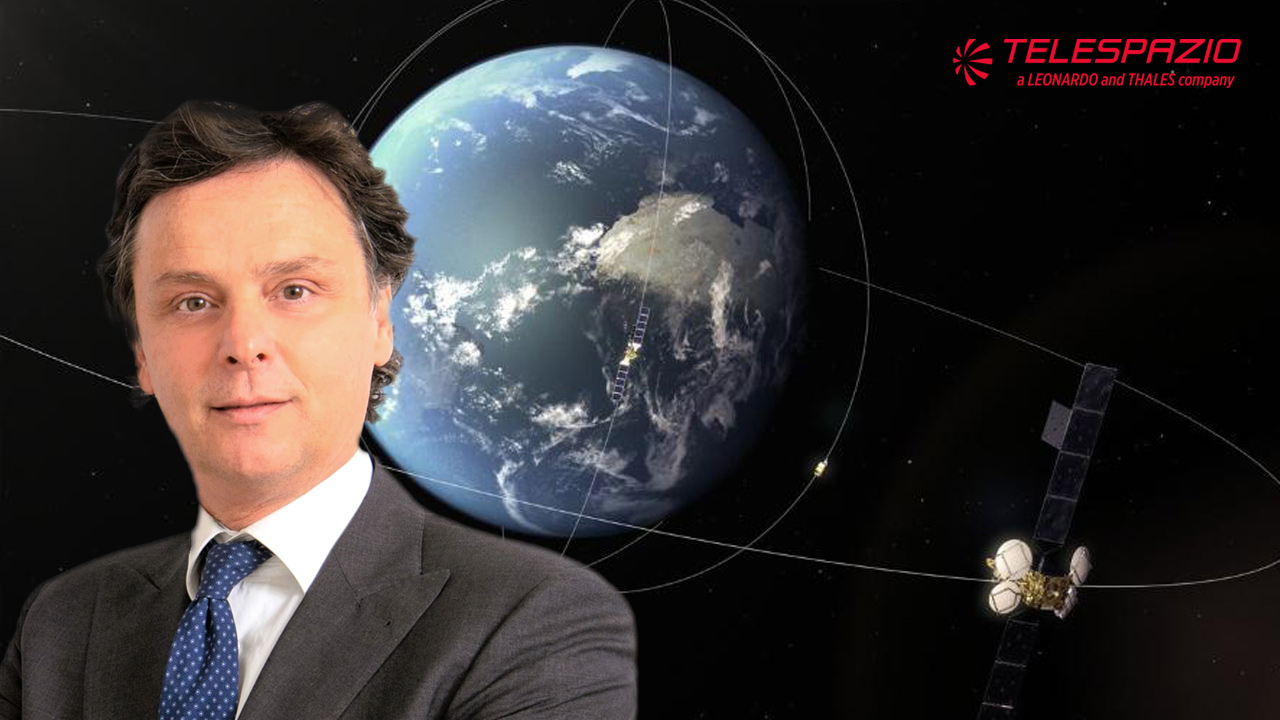
SATELLITE COMMUNICATION
Telespazio: pioneers of satellite communication
A conversation with Alessandro Caranci, Head of Satellite Communications at Telespazio
(An interview by Christian Cinetto)
“Telespazio was the first satellite service provider in the world, we began our activity in 1961, when satellites were not yet in orbit. Italy prepared to participate in the race to space, and a group of engineers founded what is today the Fucino Space Center. It is currently the largest space center in the world for civilian use.”
Telespazio’s headquarters in Rome is just as one would imagine it. Very thorough security, the first of many rocket models right at the entrance, and then labyrinthine corridors where the guest, if abandoned, might find themselves becoming the new Frank Dixon from The Terminal. Every now and then, an open door appears with open spaces that resemble those of NASA: monitors, monitors, and more monitors. And obviously engineers, physicists, mathematicians, and who knows what other expertise is contained in a place that hosts hundreds of professionals dealing with cutting-edge technologies. Space, along with the ocean depths, is the frontier of our knowledge.
The quote belongs to engineer Alessandro Caranci, Senior Vice President of Satellite Communications at Telespazio, with whom I had the pleasure of conversing.
Let’s start from the beginning: who is Alessandro Caranci and how did you come to Telespazio?
Professionally, I am an engineer. At the beginning of my career, I dealt with cables, then I started working for Telespazio in 2004. At some point, I went to work at Eutelsat and then returned to Telespazio, where I have happily been for more than 10 years. Today, I lead the satellite communication part of this group, which is extremely relevant in the space world.
News
NEWS from NAMEX and SURROUNDINGS
» On February 27, the Assembly of the Namex Consortium members and the election of the new Board of Directors, which will remain in office for the next three years, took place at the Frentani Congress Center, Rome.
Read more
» On March 12, during the Atletico Madrid vs Real Madrid match, exclusively on Prime video, Namex reached its new traffic peak of 1.122 Tbps. The growth in traffic peaks since the beginning of the year exceeds 12%. Even more significant is the year-over-year data: more than 90% compared to March 2024.
Read more
» On April 15, in the Protomoteca Hall of the Campidoglio, Rome, celebrations will be held for the pioneers of the Rome NAP, which was founded in 1995 and became Namex six years later. It will be the celebration of the 30th anniversary of Rome’s internet exchange point and its role in the digitalization of our country. Invitation-only event, reserved for consortium members.
https://jubilee30.namex.it
» On March 18, Namex and Top-IX, the consortium that manages the Turin exchange point, presented the time synchronization service offered to our members. It’s called Chronos Namex and can be crucial for those applications where time certification of data is critical to the service.
Read more
» Since last year, Namex has been collaborating with Scuola Onlife, the project of Fondazione Scintille di Futuro in collaboration with Edulia and Treccani. Namex’s role is to explain the Internet to students and teachers. On March 18, Flavio Luciani, Chief Technology Officer of Namex, was the protagonist of the day.
Read more
» The Namex Annual Meeting, NAM2025, returns. It will be held at the Gazometro, the renovated industrial complex in Rome with a new purpose, a true technological innovation hub.
We look forward to seeing you on June 11, registrations will open in the second half of April. For those interested, sponsorship plans are already available.
Write to us at segreteria.meeting@namex.it
» The European Commission’s project to strengthen submarine cable security
The European Commission has launched a Joint Communication to strengthen the security of submarine cables. The communication has four main objectives: prevention, detection, response and recovery, and deterrence. Key actions:
- Increase security requirements and risk assessments for submarine cables.
- Improve threat monitoring for faster response.
- Create an EU fleet reserve to repair damaged cables more quickly.
- Apply sanctions and diplomatic measures against hostile actors.
€420 million has already been allocated for backbone connectivity projects, with further investments planned between 2025 and 2027 for digital infrastructure, including smart submarine cables. The Connecting Europe Facility (CEF) for energy has invested over €8 billion in EU energy infrastructure, mainly for electrical cable projects.
Read more
» Meta’s record submarine cable, 50,000 km
Meta has announced Project Waterworth, an ambitious project to build the world’s longest submarine cable, extending over 50,000 km. This project represents the first submarine cable entirely owned by Meta and will require a multi-year investment of billions of dollars. Project features:
- The cable will connect five continents, passing through the United States, India, Brazil, and South Africa.
- It will use cables with 24 fiber pairs, ensuring unparalleled transmission capacity.
- It will be installed at depths of up to 7,000 meters to avoid accidental damage or vandalism.
- It will improve global connectivity, support the development of artificial intelligence, and facilitate digital inclusion.
Project Waterworth marks a significant step in Meta’s strategy to strengthen global digital infrastructure and places the company among the leaders in the submarine cable sector, alongside Google and other big tech companies.
Read more
» Low-orbit satellites, now Musk’s Starlink faces Chinese competition
Starlink, SpaceX’s satellite internet service, is facing growing competition from Chinese rivals in low orbit. In particular SpaceSail, a state-funded company that is rapidly expanding its global presence. SpaceSail has planned to launch 648 satellites in low Earth orbit (LEO) by 2025 and intends to reach a total of 15,000 satellites by 2030.
SpaceSail has already signed agreements to provide services in Brazil and Kazakhstan and is discussing with over 30 other countries for further expansions.
China also aims to launch the Thousand Sails or Qianfan constellation, about 14,000 satellites to offer satellite internet services. Starlink now operates in over 100 countries with 6,000 satellites (with plans for over 30,000), but must therefore face the growing Chinese presence in the sector. The rapid expansion of Chinese satellites also raises concerns about data security, as Chinese companies operate under close government supervision, which could allow Beijing to exercise significant control over global communication infrastructure.
Read more
» Satellites, the European alternative grows: Eutelsat
Eutelsat is increasingly presenting itself as the European alternative to Starlink, so much so that in March its shares had a boom. For many reasons. Its OneWeb constellation offers significant coverage and similar performance to Starlink, albeit with a lower number of satellites (650 versus 6,000, in low orbit). Additionally, Eutelsat contributes to Europe’s digital autonomy, reducing dependence on external providers like SpaceX. This aspect is particularly relevant in sensitive geopolitical contexts, such as Ukraine, where Eutelsat has been considered as a strategic alternative to Starlink. But in general, the EU is increasingly motivated to enhance its own autonomous military capability, including satellite assets, at a time when, under Trump’s presidency, the role of the US for Europe’s security becomes uncertain. The issue is also directly relevant for Italy, which is intensifying dialogues with Eutelsat to obtain a secure satellite network. Let’s remember that Europe is also investing in a prospective public satellite project, Iris2, by 2030, for the launch of 290 satellites.
Read more
» Fibercop 2025 budget
Fibercop has approved the budget for 2025 with the goal of covering over 2 million real estate units with FTTH fiber, in line with the Italia a 1 Giga Plan financed with PNRR funds. Preliminary results for 2024 show revenues of approximately €3,9 billion and a normalized EBITDA after leasing of approximately €1,9 billion. In 2024, €2,4 billion were invested in laying FTTH fiber.
Read more
» AGCOM has announced that it has launched a consultation to establish whether CDN services should operate under the general authorization regime provided for by the Electronic Communications Code, and therefore be subject to many of the rules that apply to ISPs. This type of consultation is in continuity with the authority’s intention to investigate anomalous traffic flows during football matches.
Read more

